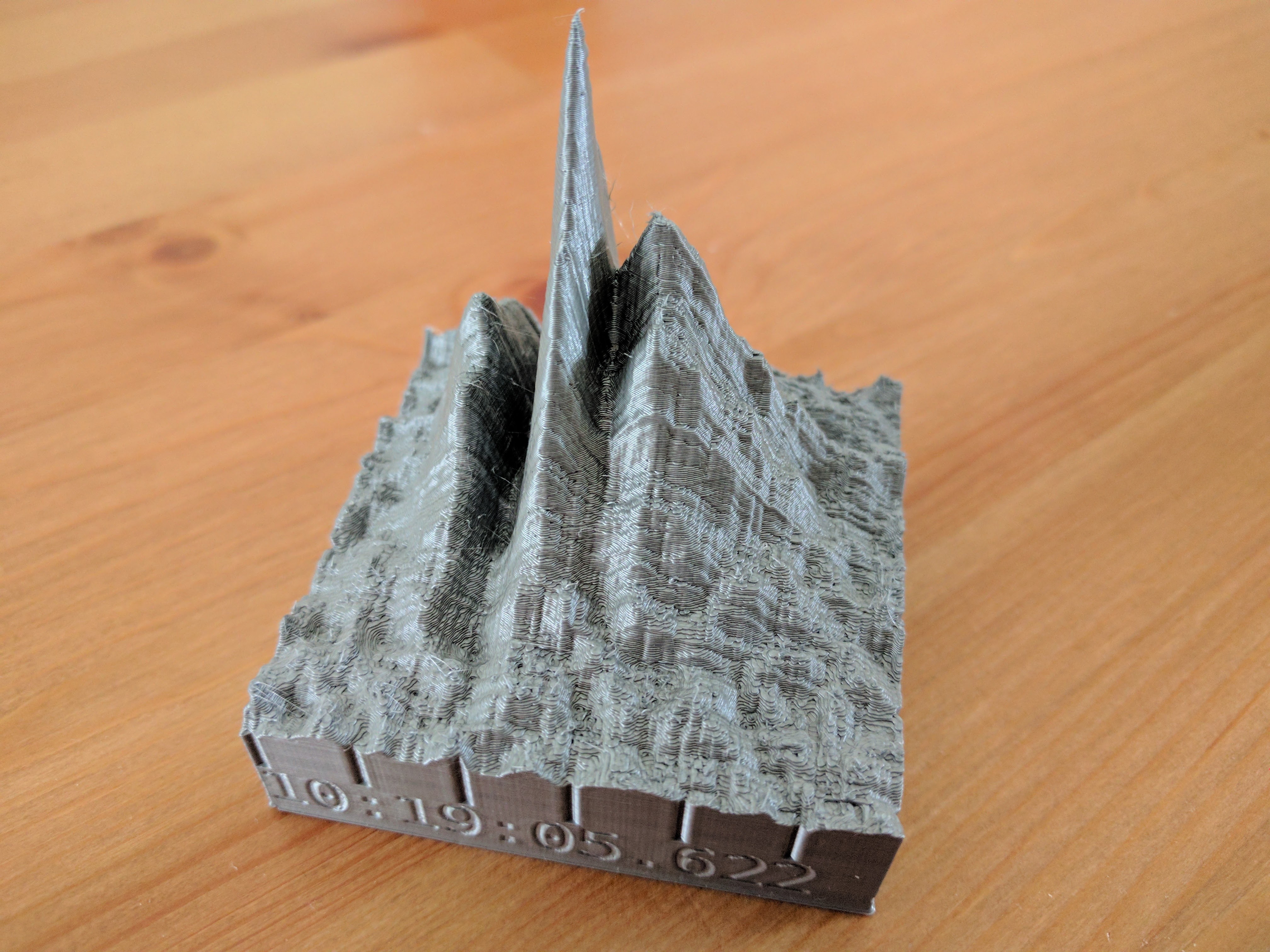Astronomy
Some visualizations (tactilizations?) of astronomy data.
The third thing I printed on my delightful new Prusa i3 Mk2s:
It's a fast radio burst. We don't know what actually makes them, except they're from other galaxies, really bright, and really short.
The tick marks on the visible side are one millisecond apart; the other axis is frequency, from 1155-1700 MHz. Nobody understands why these have these funny shapes, and they're all somewhat different from each other. The time is the UTC time, to the millisecond, of the first tick. On other sides of the print are the frequency range, the date, and the name of the telescope (Arecibo).
Re: Astronomy
cool.
how did you generate the 3d file with your reception data ?
btw. seems that the aliens have very strong smartphones, in the same frequency range as we do 
dem inscheniör is' nix zu schwör...
Re: Astronomy
seems that the aliens have very strong smartphones, in the same frequency range as we do
E.T. "Call Home !"
😆
Thomas
Re: Astronomy
The third thing I printed on my delightful new Prusa i3 Mk2s
The first thought that came on my mind when I saw that picture was that it could be printed better if it was turned backside down (numbers on top). Just an idea.
Re: Astronomy
The third thing I printed on my delightful new Prusa i3 Mk2s
The first thought that came on my mind when I saw that picture was that it could be printed better if it was turned backside down (numbers on top). Just an idea.
I've done some experimentation with my previous printer and concluded that text is more readable when printed vertically. More importantly, the data is a height field, so guaranteed no-overhangs when printed in this orientation. Tipping it over would introduce overhangs.
The data was turned into an STL by a python script which cleaned up the raw data, wrote it to a text file, and then wrote an OpenSCAD file to assemble the text, height field, and attachment ring, and cut out the calibration marks. Unfortunately doing boolean operations on height fields in OpenSCAD appears to be extremely memory intensive. Two larger data sets actually make OpenSCAD segfault on my laptop (which only has 16 GB RAM) so I'm going to have to run this on my compute machine.
I have a number of data sets like this: numerical data coming from observations that I want to turn into 3D objects. OpenSCAD has some severe limitations when dealing with complex models, but I haven't yet found suitable tools in python. In this particular case, I think the problem is that boolean operations on high-polygon-count models are simply expensive operations. (They shouldn't be, especially, but I'm not prepared to rewrite CGAL.)
